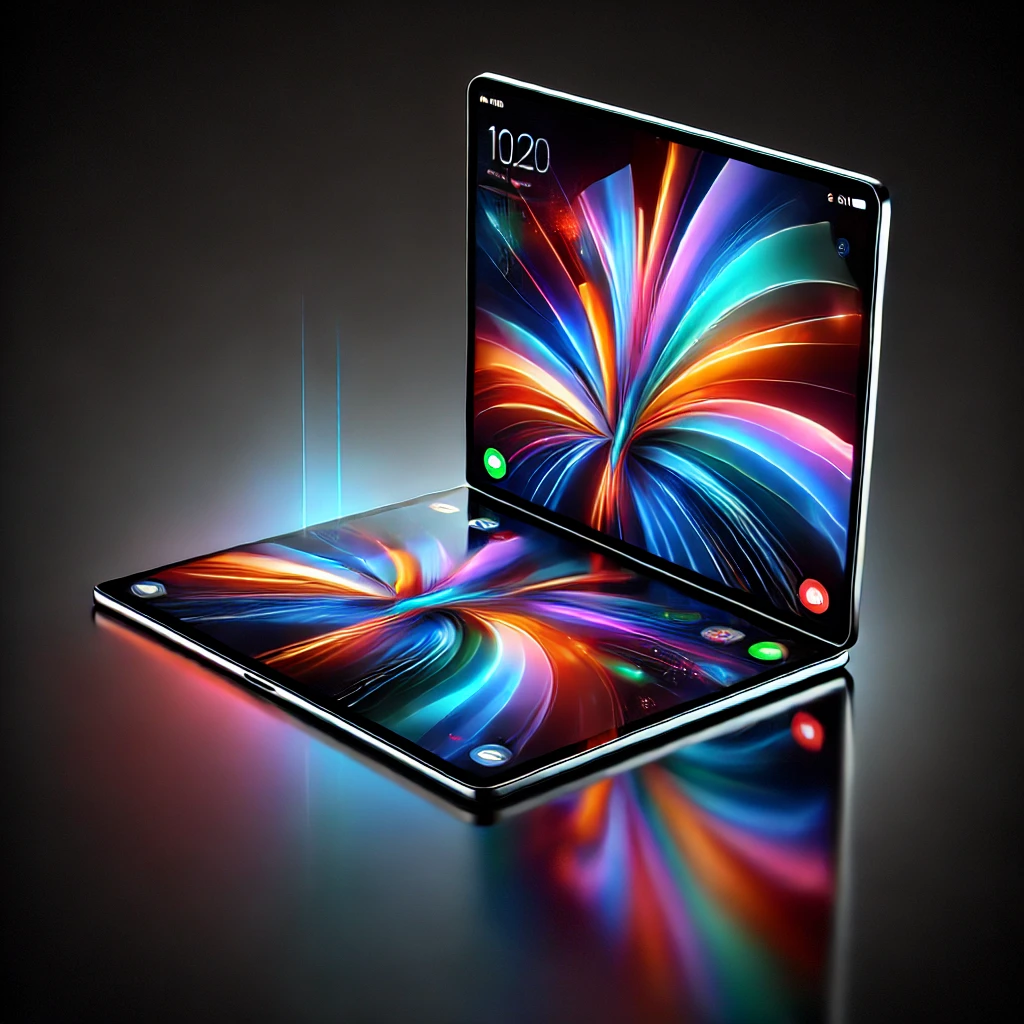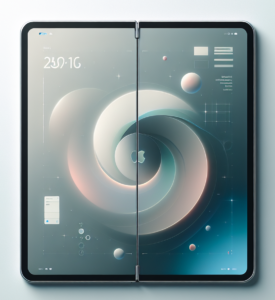Apple has consistently set the bar for innovation in the tech industry, and its current iPad lineup is no exception. However, as we look towards the future, some exciting—and potentially concerning—rumors have surfaced about a new Apple device: a foldable iPad. According to reports, this device could feature a large 20-inch hybrid OLED screen, a size that would make it one of the most unique and ambitious entries into the foldable tablet market. But despite the buzz surrounding it, some question whether the rumored foldable iPad is too big for its own good.
In this article, we’ll dive deep into the details of the foldable iPad, examine its potential design, size concerns, and implications for its usability, as well as how it might impact Apple’s product lineup. We’ll also explore whether this large device could be practical for everyday use and what users can expect from the rumored foldable iPad.
The Emergence of Foldable Devices
The foldable device trend has become increasingly popular, particularly in the smartphone market. Samsung has led the charge with its Galaxy Z Fold and Galaxy Z Flip models, which introduced the concept of foldable screens to the mainstream. These devices feature flexible OLED screens that allow users to enjoy the convenience of a larger display without sacrificing portability. While foldable phones have garnered attention, Apple has been more cautious in its approach. To date, the company has stuck with traditional iPhone and iPad designs.
However, as the foldable tech market matures, it’s becoming clear that Apple may soon dip its toes into this space. Rumors of a foldable iPad have started circulating, with many expecting Apple to debut a device that combines the versatility of a tablet with the form factor of a laptop. This could allow users to enjoy the benefits of a large screen in a portable, foldable package. But does the rumored 20-inch size make this foldable iPad a viable option for most consumers? Let’s take a closer look.
What We Know About the Rumored Foldable iPad
According to industry insiders, Apple’s foldable iPad is expected to feature a 20-inch OLED display, making it one of the largest tablet screens ever created by the company. The device would likely incorporate a hybrid OLED panel, which is expected to provide vibrant colors, deep blacks, and exceptional contrast. OLED technology is particularly well-suited for foldable devices due to its flexibility and ability to maintain screen quality even after multiple folds.
Despite its impressive display technology, the size of the foldable iPad could be a double-edged sword. While the larger screen would be great for media consumption, multitasking, and even productivity tasks like photo editing or document creation, it also raises concerns about the device’s portability. A 20-inch tablet would be difficult to carry around, and its size could be a major drawback for those looking for a more compact device.
Portability and Design: The Size Dilemma
One of the most significant concerns surrounding the rumored foldable iPad is its size. Apple’s current iPad Pro models, which feature 12.9-inch screens, are already on the larger end of the tablet spectrum. A 20-inch display would make the device more comparable to a mini-laptop, making it considerably larger than any iPad currently on the market.
While a 20-inch screen could be beneficial for certain use cases, such as watching movies or using productivity apps, it could also make the device difficult to use in everyday scenarios. For example, carrying a 20-inch foldable iPad in a bag or briefcase could be cumbersome, and using it in cramped spaces, such as on a plane or in a crowded coffee shop, could be impractical. Even when folded, the device might be too large and heavy to comfortably fit in a small bag, further limiting its portability.
Additionally, the added weight of the device could make it less ergonomic for extended use. Unlike smaller tablets, which can be held comfortably in one hand, the 20-inch foldable iPad would likely require both hands to use. This could make one-handed tasks, such as reading or browsing, significantly more difficult.
Potential Usability Issues
When it comes to tablets, usability is key. Apple has built its reputation on devices that are intuitive and easy to use. However, the sheer size of the rumored foldable iPad could compromise these user-friendly characteristics. The device’s large screen could make it more challenging to interact with certain apps and features, particularly in a tablet mode where touch gestures are the primary form of input.
While a larger screen might be ideal for tasks that require more screen real estate, such as multitasking or viewing detailed content, it could also make the device unwieldy for everyday tablet tasks. The rumored 20-inch display would likely make the device too large for comfortable use in portrait mode, which is the orientation most people use when reading or browsing. As a result, the device could be relegated to landscape mode for most tasks, limiting its versatility.
Another potential issue is the foldable nature of the device. While the ability to fold the iPad in half might offer some convenience in terms of storage and portability, it could also lead to durability concerns. Foldable devices are prone to wear and tear, particularly around the hinge area. Repeated folding and unfolding could cause the screen to develop creases, and over time, the hinge could weaken, leading to potential mechanical failure. If the foldable iPad faces these issues, it could be frustrating for users who expect a high-quality, durable device.
Battery Life and Performance
Another key factor to consider is the battery life and performance of the foldable iPad. The larger the screen, the more power it requires to function effectively. A 20-inch OLED screen would likely draw more power than the smaller iPad models, potentially leading to shorter battery life. While Apple has made significant strides in developing energy-efficient processors, the foldable design and large display would still place significant strain on the battery.
The rumored foldable iPad would likely feature the latest Apple silicon, including the M-series chip, which offers exceptional performance and efficiency. However, the device’s larger size and increased power demands could limit how long users can go between charges. Apple would need to find a balance between screen size, performance, and battery life to ensure the foldable iPad is practical for daily use.
Price Tag: Is It Worth the Investment?
Foldable devices are inherently more expensive than their non-foldable counterparts, and the foldable iPad would likely follow this trend. Reports suggest that the device could cost well over $2,500, which is a steep price for any tablet. This price tag would put the foldable iPad out of reach for most consumers, and it would likely be aimed at tech enthusiasts and professionals who are willing to pay a premium for cutting-edge technology.
At this price point, potential buyers would expect the foldable iPad to offer a seamless and flawless experience. However, given the challenges associated with foldable technology, such as potential durability concerns and battery limitations, it remains to be seen whether the device would justify its high price.
The Future of Foldable Devices: Can Apple Make It Work?
The concept of a foldable iPad is certainly intriguing, but whether or not it will be successful remains uncertain. Apple has a history of taking risks and pushing the boundaries of technology, but the rumored foldable iPad could be too big of a leap. While a 20-inch screen may seem appealing on paper, its practicality and usability could be compromised by the device’s size.
It’s also worth considering how the foldable iPad would fit into Apple’s existing product lineup. The current iPad Pro models, with their 12.9-inch displays, are already some of the most powerful and versatile tablets on the market. A 20-inch foldable iPad could blur the lines between a tablet and a laptop, but it might not provide enough value to justify its size and cost.
Apple’s rumored foldable iPad could signal a new era of foldable devices, but its size raises several concerns about its practicality. A 20-inch screen might be exciting for those who crave a larger display, but it could make the device cumbersome and difficult to use in everyday situations. While foldable technology holds great promise, Apple’s success with this new device will depend on how well it balances size, portability, and usability. Until we see an official announcement or prototype, it’s difficult to say whether the foldable iPad will be a game-changer or a product too big for its own good.
Visit our other website: aibrainpowered.com














